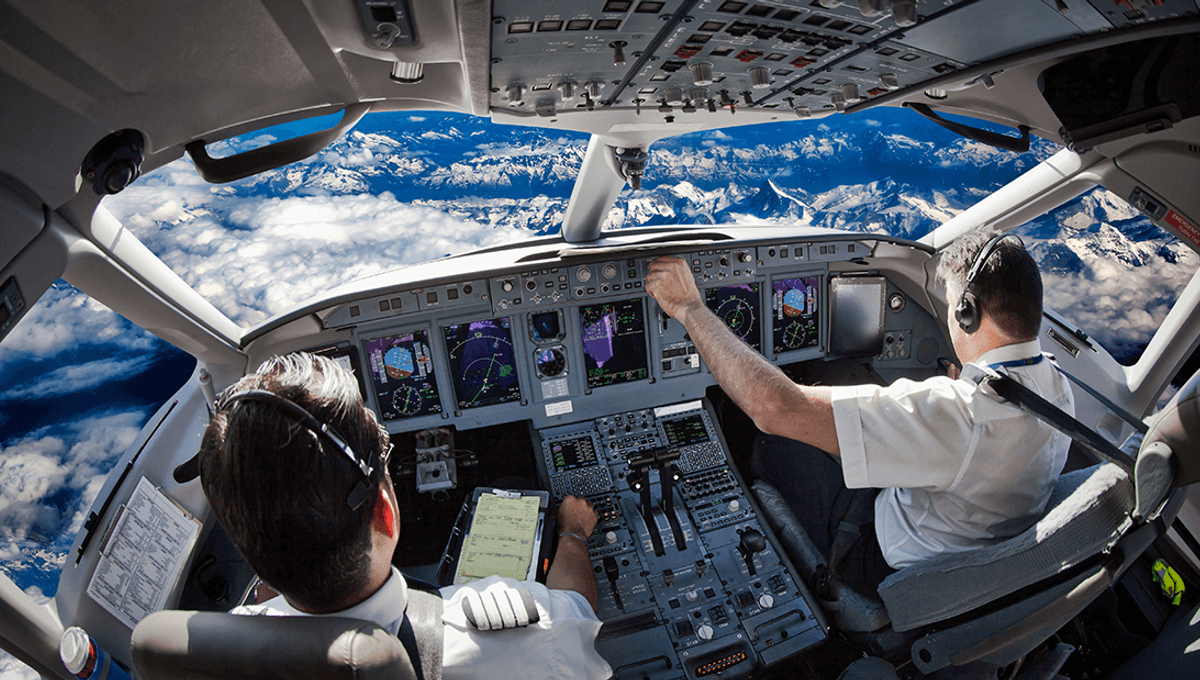
As well as wondering why flight attendants never seem to drink hot drinks and why airplane windows have those tiny little holes in them, you may have wondered at some point why so few pilots have beards.
While it’s not a Federal Aviation Administration (FAA) policy, several big airlines do have strict policies about facial hair. American Airlines, for example, requires their pilots to be clean-shaven before reporting for duty.
“We do not allow pilots with facial hair to be on active duty,” an American Airlines spokesperson explained to Thrillist. “It’s actually safety driven. Safety is one of the biggest, most important things in our industry.”
American airlines goes as far as not allowing “jumpseaters” – off duty airline crew occupying spare collapsible seats in the aircraft – to have beards or goatees. Some airlines do allow you to have some facial hair, although you are limited to a neatly trimmed goatee or mustache. Delta will permit sideburns as long as they don’t reach down past the middle of the ear, while mustaches are allowed too if they don’t reach past the corner of the mouth.
It’s not some weird fashion choice, but the result of a 1987 safety review on masks and facial hair. Following reports that beards could make oxygen masks less efficient, several studies showed that that was the case.
“Three popular TSO-approved crewmember oxygen masks equipped with mask-mounted regulators were tested to determine if a decrement in performance would occur as a result of the presence of facial hair,” the report explains of one such study. “The data resulting from these tests indicated that decrement in performance does occur when facial hair is present along the sealing surface of crew oxygen masks. This decrement is proportional to the amount of facial hair present, the type mask worn, the suspension system associated with the mask, and the exercise level to which the individual is subjected.”
One of the studies found leakage between 16 and 67 percent for passengers sporting beards underneath their oxygen masks. This safety-concern is exacerbated by the physical activity of crew members, which raises their breathing rate and increases their risk of hypoxia.
While all airlines permit passengers to have facial hair – it’s incredibly rare that they would be asked to perform complex duties like flying the plane – reduced airflow caused by a big bushy beard could be a problem for them too in an emergency situation.
“The leakage of ambient air caused by beards does not permit an adequate percentage of oxygen to be presented to the lower portion of the respirator tract. The proper functioning of the continuous flow mask relies on having the greatest concentration of oxygen presented at the beginning of inspiration (taking a breath or inhaling) with dilution of oxygen permitted during the latter phase of inspiration. The concentration of oxygen and the inspiration phase during which it is inhaled are more critical factors than the total oxygen received,” the report continues.
“Bearded passengers might expect some deficit in oxygenation following a decompression that could lead to varying degrees of hypoxia (physiological conditions that result when the body does not receive enough oxygen). If the mask is properly donned and usual emergency descent procedures can be followed, the deficit in oxygenation might not be severe enough to be life-threatening, but could cause loss of consciousness.”
All “explainer” articles are confirmed by fact checkers to be correct at time of publishing. Text, images, and links may be edited, removed, or added to at a later date to keep information current.
[H/T: Thrillist]
Source Link: Airlines Explain Why You Rarely See Pilots With Beards